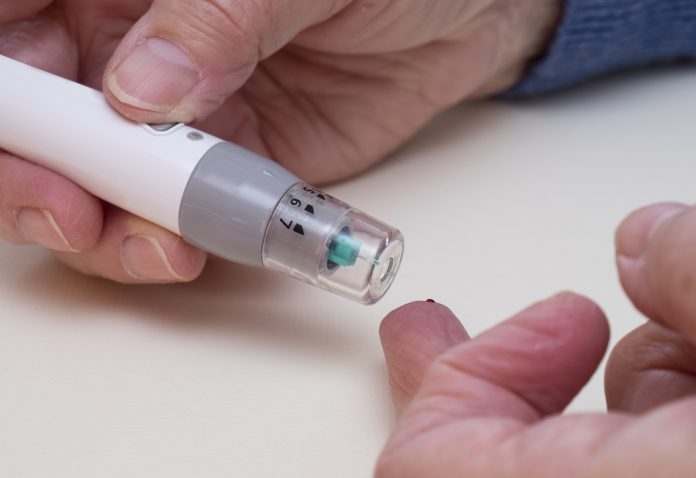Research from the Nuffield Department of Population Health, University of Oxford, supported by Diabetes UK, has shown that helping people with Type 2 diabetes to meet their three treatment targets could lead to significant savings for the NHS
It could also and help people with Type 2 diabetes live longer healthier lives. Further analysis of the results suggests that NHS England could save as much as £727 million over 10 years if all people with Type 2 diabetes over the age of 20 in England and Wales met their three treatment targets [1].
The three treatment targets focus on blood glucose, blood pressure and cholesterol levels. They are set by NICE, and all GPs and healthcare professionals are encouraged to help people with Type 2 diabetes meet as many of these targets as possible. 3.09 million people are currently diagnosed with Type 2 diabetes in England and Wales, but just 39.8% of these people meet all three of their treatment targets [2].
The research showed that meeting treatment targets lowered people’s risk of diabetes-related complications, leading to significant savings and helping people with diabetes live longer healthier lives. It suggests that meeting all three treatment targets could reduce the cost of treating complications by £1037 per patient over 10 years. Meeting two would yield a £940 saving, and one a £859 saving. While encouraging, it should be noted that these savings do not factor in the potential costs involved in helping people to meet the additional treatment targets.
NHS England spends approximately £10 billion every year on treating diabetes in all its forms. Most of this is spent on treating complications, which include sight loss, heart attacks, stroke and nerve damage. This figure is likely to increase as the prevalence of Type 2 diabetes continues to rise. The number of people living with the condition has doubled in the last twenty years.
Mi Jun Keng, a researcher at the Nuffield Department of Population Health, University of Oxford, and lead author of the paper, said:
“Meeting all three treatment targets reduces the costs to the NHS of treating complications by about £1000 per patient. This could lead to substantial savings for the NHS considering the high and increasing prevalence of Type 2 diabetes in England and Wales.”
Nikki Joule, Policy Manager at Diabetes UK, said:
“This research shows just how much could be saved if all people with Type 2 diabetes over the age of 20 were helped to meet all of their NICE-defined treatment targets. Currently, fewer than 2 in 5 meet all three, and this needs to change.
“We hope these findings categorically demonstrate to healthcare commissioners that there are significant economic benefits in improving the support people with Type 2 diabetes receive to help them manage their condition.
“It’s vital that all people with diabetes are given the support they need to meet as many of their treatment targets as possible. This will help people with diabetes live longer, healthier lives and could also save money for our already stretched NHS.”
The research showed that meeting all three treatment targets yielded an additional 1.5 years of healthy life per patient, due to a reduced risk of complications associated with meeting treatment targets. For example, the risk of having a heart attack within 10 years was 5.6% if one target was met, and was 1.8% if all three treatment targets were met. A similar trend was observed for other life-changing complications like stroke, blindness and amputation.
Professor Borislava Mihaylova, the senior author of the paper, noted:
“Our study shows that if the 10% lowest-performing GP practices (with about a quarter of their patients meeting the targets) were to reach the target levels achieved by the top 10% performing GP practices (with about half of patients meeting the targets), they would realise an average gain of 30 years of life for every 100 patients or 3.6 months per patient. These benefits would more than double if they could get all their patients to meet all three treatment targets.”
While this research focuses on three treatment targets, it’s important to note that people with diabetes are also entitled to “The 15 Healthcare Essentials”, a set of essential health checks they are entitled to for free on the NHS which include blood glucose, blood pressure and cholesterol checks, as well as others like foot and eye screenings.
This research was supported by a research grant from Diabetes UK. The study authors, working in the Nuffield Department of Population Health, University of Oxford, also received support from the NIHR Oxford Biomedical Research Centre. The study was designed, executed and reported independently from all sources of funding.
The research paper was originally published in Diabetes, Obesity and Metabolism.
References:
[1] The researchers found the potential total savings if all people with Type 2 diabetes met all three targets by using the potential savings associated with increasing the number of targets met from zero, one or two targets to three, then applied these respective savings to the proportions of people that were achieving zero, one or two treatment targets, based on the most recent National Diabetes Audit figures, to come to the final cost-saving figure. For the full analysis, a data table is available on request.
It’s vital to note that these total savings do not include any additional expenditure required to reach all three targets (e.g. GP cost, drug costs, or any costs to incentivise patients’ adherence to clinical interventSions). It should also be noted that even with maximum effort, there will almost inevitably be a proportion of patients who are simply not able to achieve all three targets.
It should also be noted that our analysis to reach the total saving also includes a small number of people living with “other”, more rare, forms of diabetes such as MODY and gestational.
[2] NHS Digital (2019) National Diabetes Audit 2017-2018, Characteristics of people with diabetes short report.











